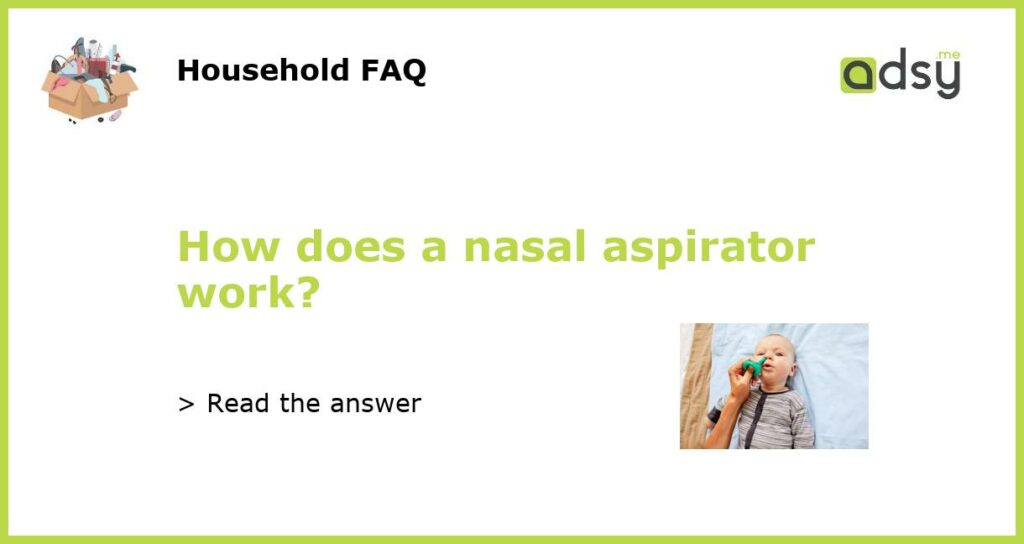What is a Nasal Aspirator?
A nasal aspirator is a small device used to clear mucus from the nasal passages of infants and toddlers who are unable to blow their nose on their own. This device is also known as a suction bulb or a nasal bulb. It is made of rubber or plastic and has a bulb-shaped end that is inserted into the nostril of the baby.
How does a Nasal Aspirator work?
When the bulb-shaped end of the aspirator is inserted into the nostril, the caregiver squeezes the bulb to create suction. This suction helps to extract mucus from the baby’s nose, enabling them to breathe more comfortably. The mucus is held inside the bulb and can be cleaned after use.
Benefits and Risks of using a Nasal Aspirator
The main benefits of using a nasal aspirator are that it can provide quick relief for babies suffering from a stuffy or runny nose, as well as reduce the risk of infections or illnesses. The risks associated with using a nasal aspirator include accidentally pushing the mucus further up the nasal passage, causing irritation or discomfort to the baby. It is also important to ensure that the aspirator is kept clean to prevent the spread of germs or infections.
Types of Nasal Aspirators
There are two main types of nasal aspirators – the rubber bulb syringe and the electric nasal aspirator. The rubber bulb syringe is commonly used and is easy to find in most pharmacies or baby supply stores. The electric nasal aspirator is a newer and more expensive option that uses a motor to create suction, reducing the amount of effort required by the caregiver.
When to Use a Nasal Aspirator
A nasal aspirator can be used whenever a baby is experiencing a stuffy or runny nose. However, it is important to note that overuse of a nasal aspirator can irritate the lining of the nasal passages and cause discomfort to the baby. Consult with a healthcare professional if the baby exhibits symptoms such as a fever, cough, or difficulty breathing.






